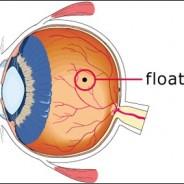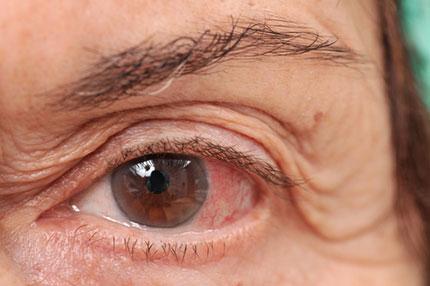
Eye floaters can be a nuisance sometimes, but they are mostly just that a nuisance.
Eye floaters appear as shapes in our vision, such as a strange squiggle or cobweb form, that follow our line of sight. Eye floaters, also called muscae volitantes or flashes, are objects of different shapes for example threads, dots, squiggles and cobwebs which people commonly experience as floating objects within their line of vision.
The eyeball contains a jelly-like substance known as vitreous humor. Sometimes, tiny clumps form within this jelly and may appear as specks inside your vision. Floaters tend to increase with age. Eye floaters are harmless; however, an abrupt increase in number may indicate damage or disease.
What causes of eye floaters?
Age is the most common cause of eye floaters. Often around the age of 50-60, the jelly-like vitreous humor can begin to shrink and become more watery. Floaters can then form into clumps and strands and drift easier, migrating into the visual field.
Using the age comes the drying, thinning from the vitreous body and the changes in its structure. Tiny and slight floaters form on its surface. Because the floaters move very near towards the retina they’re perceived as eye floaters. Around the fifth decade of life this usually leads to a detachment of the posterior part of the vitreous body within the forward direction.
However, the posterior part isn’t completely transparent and has a visible ring through which the vitreous body was attached to the optic nerve. The ring is usually perceived as an unpleasant web which moves while watching human eye. However, these anomalies in the vitreous body don’t have to affect exclusively the elder generations however they occur also in part of the younger generation.
What are the Symptoms of eye floaters?
Most people who experience floaters can see feint black or gray areas within their vision. Floaters come in all shapes and sizes, such as dots, specs, clouds or lines. You may only notice them when looking at plain, light surface, like a blank wall or clear sky. Eye floaters can appear to be stationary, or they may appear to ‘float’ around your field of vision. The characteristics of floaters can include:
They can be different shapes, for example tiny spots, flecks, clear little bubbles, threads or webs.
They’re particularly visible when looking at a light-coloured area, like a blue sky.
The floaters move because the eyes move, often with a slight lag.
Large floaters can present as diminished regions of vision, but this is very rare.
Treatment for Eye Floaters
They’re caused by deposits of protein in the jelly-like substance from the vitreous humor, which encompasses the back portion of the eye. While rarely a cause for concern, they can be annoying enough for many to want to learn how to reduce floaters. Although there is not one cure used to get rid of eye floaters, there are some treatment options that could effectively reduce the number and intensity of the spots.
-

Eye Floaters Causes and Symptoms
One of the best ways to find relief from eye floaters is to ignore them completely. They might be a temporary phenomenon and could go away with passing time. If you see floating specks in the bright light, then it is advisable to remain in a dark room for sometime before the symptoms disappear. It is necessary to keep yourself preoccupied by indulging in other activities so your mind is occupied and does not get disturbed with your occurrences.
- If floaters start disrupting your routine activities, then it’s a good idea to seek medical opinion and discover the root cause of the problem. Sometimes, migraine attacks may also result in such conditions and hence treating migraine is extremely important to avoid such eye floaters.
- If the problem is extremely serious, then your doctor may advise a surgery for taking out the floaters. You may find some relief from this problem but there might be high risk involved in such procedures resulting in retinal detachment and tear that could further aggravate the problem. Hence, it is necessary to be cautious while choice for surgical methods for removal of eye floaters.


posted on 28 May at 09:39
HI ! I've had eye floaters for many years now, and last year I underwent laser removal surgery because I was so fed up with them. After surgery I was in excruciating pain for almost two weeks. Later I found interesting system, and considering I was going to spend almost a thousand dollars on my second laser surgery, I thought paying a few bucks for this system wouldn't hurt. I am so glad and thankful that I did, my floaters are now practically gone (every now and then I do get a hint of them, but they're not annoying any more) and now I don't have to undergo another painful eye surgery…not to mention the money I saved. Look this site now fb.me/1gZc7NLEt/#/www.EyeFloatersNoMore.com ! (Y)